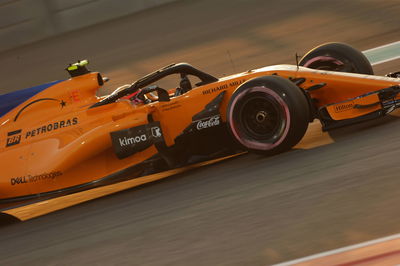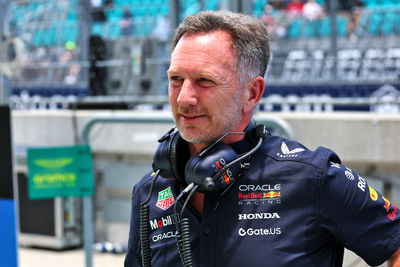How harsh realities have bred humility at McLaren F1
There was a different feeling around the McLaren Technology Centre compared to recent years upon the launch of the new MCL34 Formula 1 car earlier this week.
Gone was the anticipation that this may be 'the' car McLaren has been craving for some time; the magic bullet to revive its fortunes and return it to the front of the grid. The feeling that was there through the Honda period – that it was 'the' car, simply let down by a subpar engine – and even last year, with the belief that Renault’s power unit would remedy the team’s woes, looks to finally have been shaken.
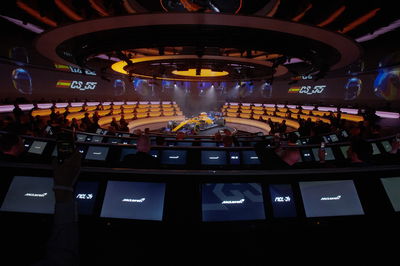
There was a different feeling around the McLaren Technology Centre compared to recent years upon the launch of the new MCL34 Formula 1 car earlier this week.
Gone was the anticipation that this may be 'the' car McLaren has been craving for some time; the magic bullet to revive its fortunes and return it to the front of the grid. The feeling that was there through the Honda period – that it was 'the' car, simply let down by a subpar engine – and even last year, with the belief that Renault’s power unit would remedy the team’s woes, looks to finally have been shaken.
A harsh reality hit McLaren last year. And the team appears to have learned very quickly from it.
It may have lacked the grandeur and battle cry-heavy rhetoric of Ferrari’s launch one day later, but McLaren’s event felt like a more honest assessment of where it truly stands heading into the 2019 season.
Unlike many of its immediate rivals, the team unveiled the new MCL34 car in its entirety, as opposed to last year’s car with a new-spec front wing. “That’s the actual car!” team members kept proudly saying. No smoke and mirrors here.
The raw account of the team continued throughout the day’s proceedings. Predictions were avoided by all parties, who instead made no secret of the fact that McLaren’s period of transition is still ongoing.
“I don’t think it’s a now or never, because the racing team is going to be around for a long time,” said Zak Brown, the team’s CEO. “It’s obviously a very important year and we showed a big step forward when we made the change last year. I think we were probably over-excited about how quickly we would return to the front and we got that wrong.
“We looked in the mirror to understand where we went wrong and made a lot of changes both structurally and operationally. So this is a very important year to show progress.”
A lot has changed since the last major McLaren car launch at the MTC, back in 2017. Gone are Eric Boullier, Tim Goss and Matt Morris, all of whom departed the team last year. Gone is Honda and the tense relationship that came with it. And gone is Fernando Alonso, the driver whose immense ability and lofty ambitions instilled a belief that anything remained possible, regardless of extenuating circumstances with the car or engine.
Everything felt far more relaxed this time around. One journalist presented noted that if Lando Norris and Carlos Sainz Jr. - both newcomers to the team’s race line-up for 2019 - were any more laid back, they would be horizontal.
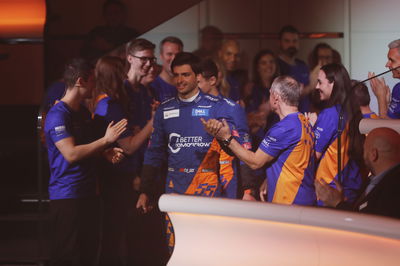
The desire to succeed still burns brightly for McLaren. But it doesn’t feel like an all-or-nothing obsession for the immediate future as it perhaps has in the past. That instead has been replaced by a quiet, cautious confidence that the rock bottom point has been and gone.
“I feel confident the team has understood a bit better where they are with the car, with themselves,” said Norris. “I do feel like they are in a better position than what they were two years ago, so I would like to say they’re going to be on upward trend.
“But I don’t think they can say they know which area to improve in every area and how to do it. There’s still a lot of development and improvement that’s got to be done to become to be able to be the best team again.
“I’ve joined at a good point. They have a better structure and understanding through the team to be able to improve.”
“I think until we see what the others are going to be doing, it's impossible to know where we are,” added Sainz, who has moved to Weybridge in West London to ensure he is within easy reach of the factory.
“We are optimistic about the directions that we have taken with the concept of the car, the directions that we’ve taken in restructuring the whole team, not only getting new people but the good people that we have already in McLaren, to get them into areas where we can exploit their talent better.
“It’s going to be a matter of when, I think. I think the place, it’s taking shape, it’s now going to be a bit of a mid-term project. I have a two-year deal to work on that, and I’m confident.
“I like what I see, I like the way the restructuring has been, and now we’re ready to go racing and see where the car is and from there start the development and the recovery.”
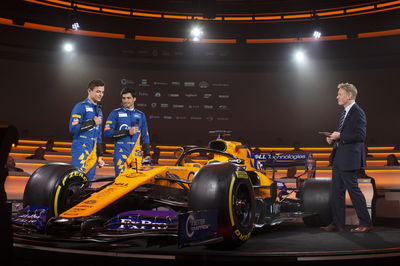
The recovery plan still lacks a couple of major building blocks, but they will arrive later this year. Andreas Seidl will start work with McLaren on May 1 as its new F1 managing director, bringing a wealth of experience and success from his recent stint with Porsche, where he led its LMP1 programme to three straight Le Mans wins and WEC titles. He will become McLaren’s F1 figurehead – something it has lacked since Boullier’s resignation last summer.
“We recognised you need someone waking up every day solely focused on F1,” explained Brown. “My role is to look after McLaren Racing in our various racing activities, of which F1 is the most important, and then I brought on Gil [de Ferran, the team’s sporting director] to assist me on those global efforts.
“Until we get people like James Key and Andreas, we all had to jump in and fill that gap until they arrive. What I am looking for in Andreas is to lead the team. I think we have a great group, I think it is stronger than any one individual but he along with James Key and the assisting organisation, will take it forward.
“We need to make sure before we take on any other activities that we have all the right resources dedicated to F1, because what we won’t do is have any distractions to the F1 team. So that is what we are looking at Andreas and the collective F1 team to do.”
The mention of James Key led to the inevitable question: did McLaren yet know when he’d be joining the team?
“Yes!” smirked Brown – even if he wouldn’t reveal when. A deal with Red Bull has been agreed to bring the Toro Rosso technical director across, many months after an announcement was made, with Brown saying the team “should soon be able to announce when James will be able to start.”
As important as figures such as Seidl and Key will be for McLaren’s future, the team has not been betting all its chips on the duo waving a magic wand and solving all its issues. The harshest reality of 2018 was the shortcomings with the chassis design that were no longer masked by power unit concerns. First impressions of the MCL34 were that a number of major changes in design approach have been made, hinting the team has learned from where it went wrong last year.
“There has been a lot of effort from our engineers to try to understand the shortcomings of the car. Being aerodynamic or something else, we did the best we could to try to address them,” said de Ferran.
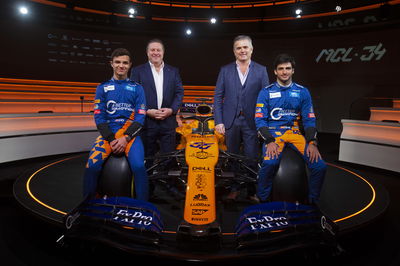
“This year there has been a new set of aerodynamic regulations and interestingly enough, they seem small, but their effect on the car has been quite large. In a way, you lose a bit of the reference point that you would have had if the regulations had been stable. It is hard to know exactly how well you are going to do in relation to everyone else.
“We worked hard in trying to understand the fundamental dynamics behind the issues, and we did our best to try to improve on them.”
McLaren is also acutely aware of the environment it finds itself competing in currently. It is one of just three teams on the grid not intertwined with one of F1’s major manufacturers. The age of the true ‘customer’ team appears to be slowly passing, making it even tougher for McLaren to fight against midfield rivals such as Alfa Romeo, Haas, and Toro Rosso. (It must be noted that McLaren, as recent as 18 months ago, enjoyed de facto works status with Honda before opting to become a Renault customer.)
“It is difficult, because the way F1 has evolved under this current set of rules, you’ve got exactly that: a few manufacturers and owners that are spending a tremendous amount of money that we can’t compete with and then have created these relationships with these B-teams,” said Brown.
“It benefits the A-teams because they get to do some incremental development and maybe get some revenue to make more money. Then the B-teams benefit from the big spend.
“Everyone is playing within the rules, but I think the rules have gotten away and allowed this dynamic which is not healthy for the sport.”
But McLaren is focusing on the things it can control internally, with de Ferran - who as sporting director has been tasked with overseeing the human performance side of the team - explaining how humility has become the overriding feeling heading into the new season.
“We’ve set a bit of a schedule of what we needed to accomplish and by when. That schedule goes forward a few years into the future, as planning things well will help us on an ongoing basis,” explained de Ferran.
“I think the key point is we’ve tried to come together as a team, collaborate better, and meet every challenge that we have in the programme. There is certainly a lot of challenges, and we are certainly excited to see the car hit the track and there is that feeling of anticipation and all that.
“But I think the key thing is to stay humble and focus on the job at hand by meeting every challenge in a collaborative manner and things will take care of themselves.”
Whether McLaren is truly on an upward swing will only become clear as the year wears on. But the noises – or, in fact, lack of noise - that came out of Woking earlier this week points to a shift in approach that could bode very well for the future.
